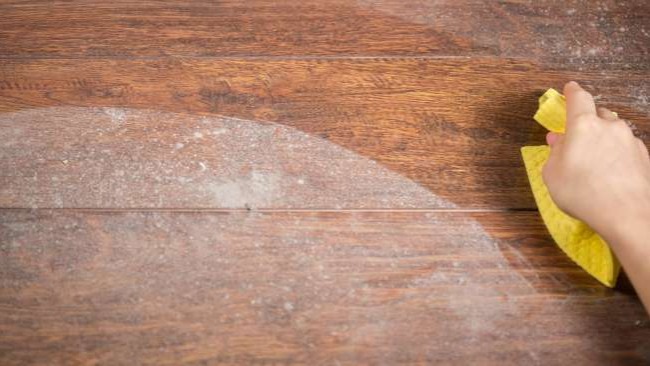Wherever we are, fine dust particles are present, from beds and work desks to clothing. Living creatures can also contribute to the presence of dust in the environment, such as pet hair particles, dead cockroaches, mold spores, and dust mites.
This dust needs to be cleaned regularly because it poses dangers to our bodies. The harmful effects of dust on health can occur when inhaled or when it comes into contact with the skin.
Here are some health dangers of dust:
1. Triggers Allergies
The most common health danger of dust is allergies. Symptoms of dust allergies include itchy, watery, and red eyes, sneezing, and a runny nose.
This condition can worsen if you engage in many outdoor activities but neglect home cleanliness and pet hygiene.
If you or your family members have dust allergies, it's important to clean the house regularly. Open all windows during the day to ensure good air circulation. Sunlight can also enter the house, reducing humidity and making it harder for mold to grow.
Avoid using carpets on the floor, especially in the bedroom. You can replace them with ceramic, marble, or wooden flooring. Also, use mite-proof sheets and pillowcases in the bedroom.
2. Increases the Risk of Antibiotic Resistance
Antibiotic resistance is the ability of bacteria to survive the effects of antibiotics. Instead of dying, bacteria multiply. This condition makes it difficult to treat bacterial infections.
Several factors can cause antibiotic resistance, such as excessive or improper use of antibiotics.
Concerning dust, it's important to remember that dust is not an inanimate object. Various living compounds are present in dust particles, one of which is an antibacterial called triclosan. It is commonly found in dust.
On the other hand, many household products like detergents, toothpaste, and soaps contain triclosan and claim to kill bacteria. This can trigger and worsen bacterial resistance.
Researchers at Northwestern University, Chicago, USA, compared 42 dust samples taken from sports facilities. They found that dust with high triclosan concentrations had bacteria that were likely to undergo genetic changes leading to antibiotic resistance.
3. Respiratory Irritation
Not only outdoor air can contain pollutants, but airborne dust inside the house is also a pollutant.
Household dust can contain various small components that become airborne, including chemicals from cleaning and household care products. These products include cleaning fluids, wood finishes, and rust removers.
If these fluids evaporate and mix with dust in the house and are inhaled, they can pose a risk.
Continuous long-term exposure to these harmful components in the respiratory tract can damage the epithelial lining. Consequently, the dangers of dust can include irritation and respiratory problems like coughing, hoarseness, and shortness of breath.
4. Eye Irritation
Another health danger of dust is eye irritation. Dust particles small enough to become airborne can affect eye health if not cleaned regularly.
The most recognizable symptom of eye irritation is a gritty or itchy sensation in the eyes.
Therefore, pay attention to personal, environmental, and product hygiene. Excessive use of antibacterial products may not be necessary and can be harmful to health.
5. Digestive Issues
Dust may inadvertently contaminate the food we consume daily. For instance, when homemade food is not properly covered or when buying food from unclean places.
Dust entering the digestive system can cause problems such as stomach pain, nausea, vomiting, and diarrhea. Always cover food containers that are not immediately consumed and avoid eating in dirty places.
6. Asthma
Dust is one of the causes of asthma. Inhaling dust can easily trigger asthma attacks in people with a history of asthma.
Asthma is characterized by shortness of breath and wheezing. If not promptly addressed, asthma can be dangerous and life-threatening.
Asthma sufferers should identify their triggers and avoid them. For example, if dust triggers asthma, avoid using carpets, stuffed animals, and piles of books or clothes at home.
7. Skin Itching
Dust can be harmful not only when inhaled but also when it comes into contact with the skin, causing irritation. Itchy and red skin complaints can occur. Scratching these skin complaints can eventually lead to wounds and secondary infections.
It may be impossible to have a 100% dust-free home. However, you can take steps to minimize health risks from dust in the house.

Post a Comment for "The Dangers of Dust for Our Health"